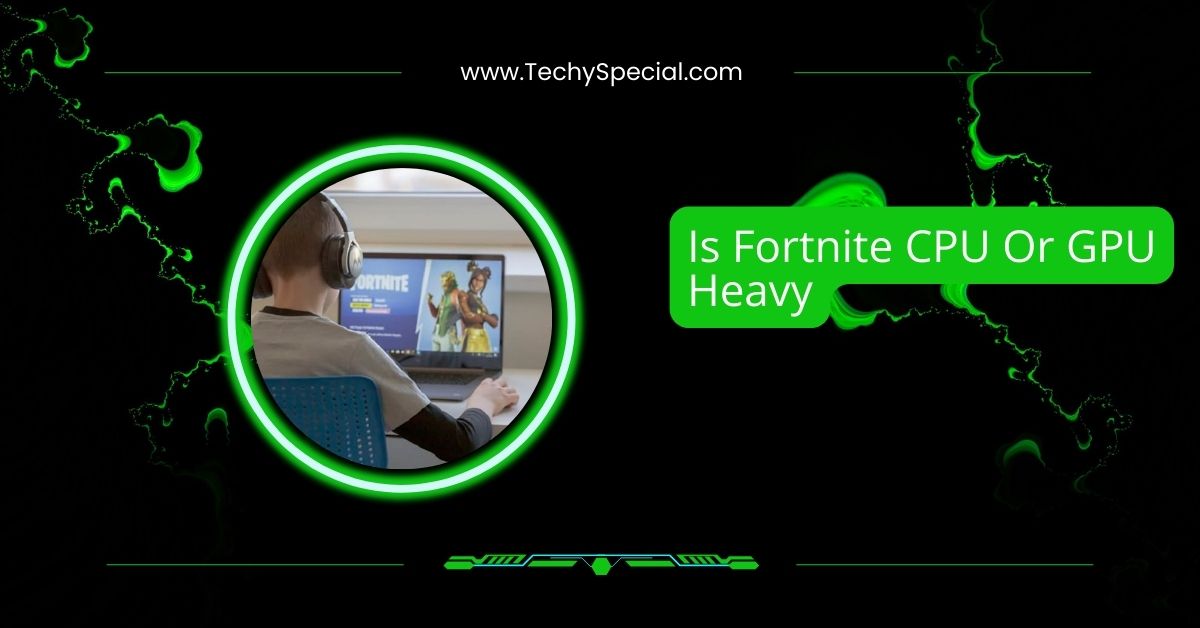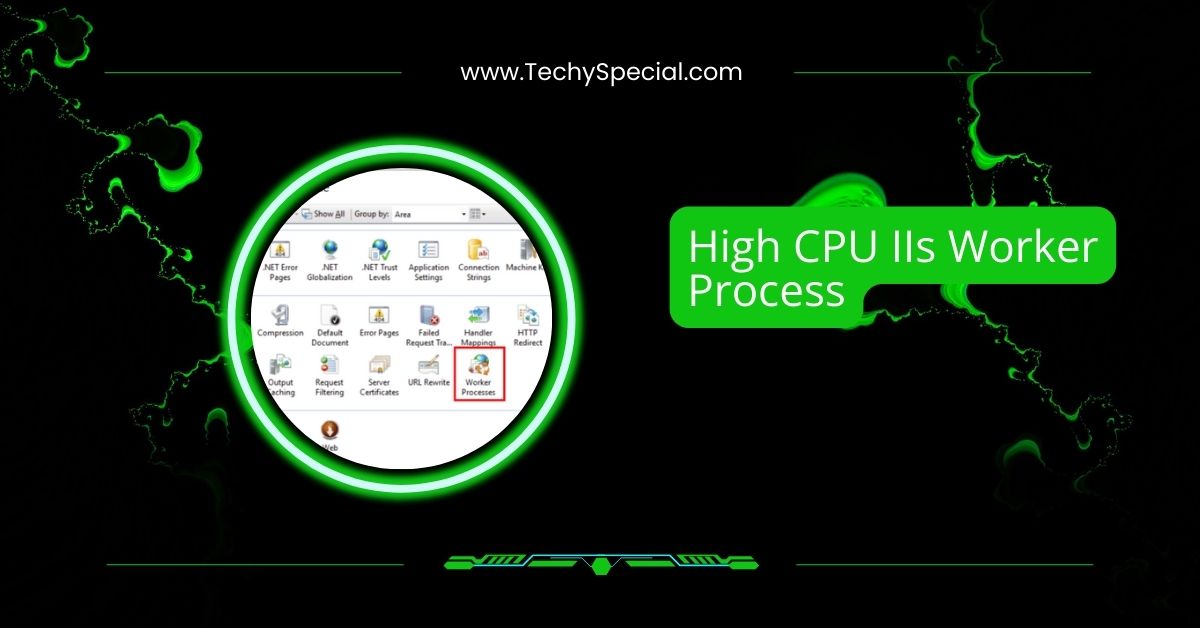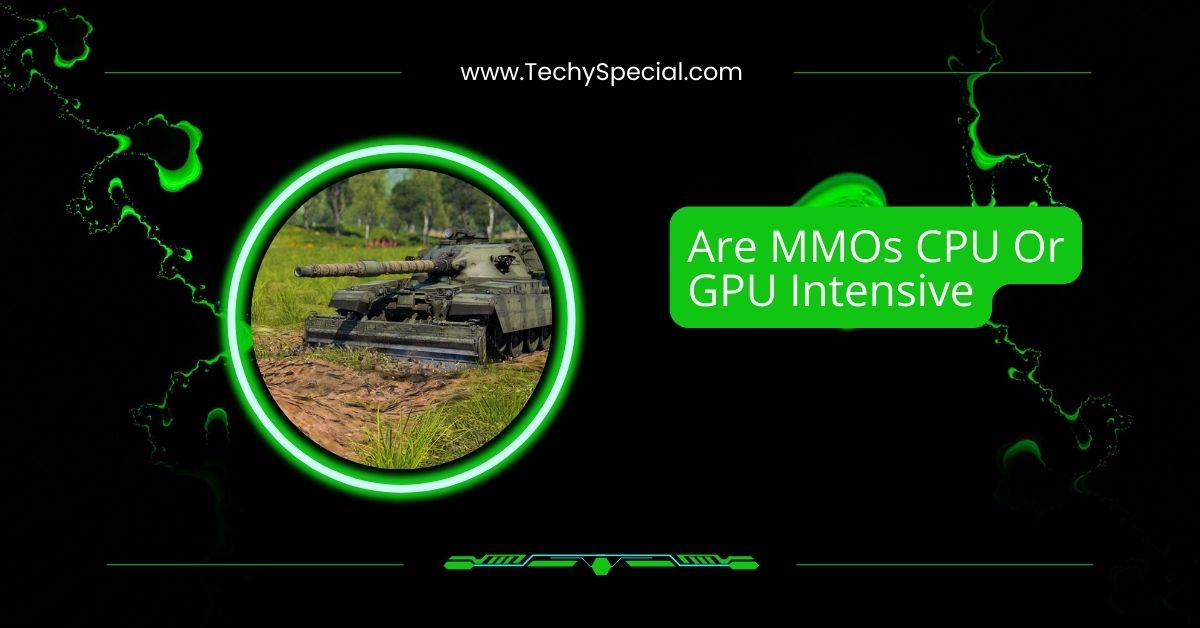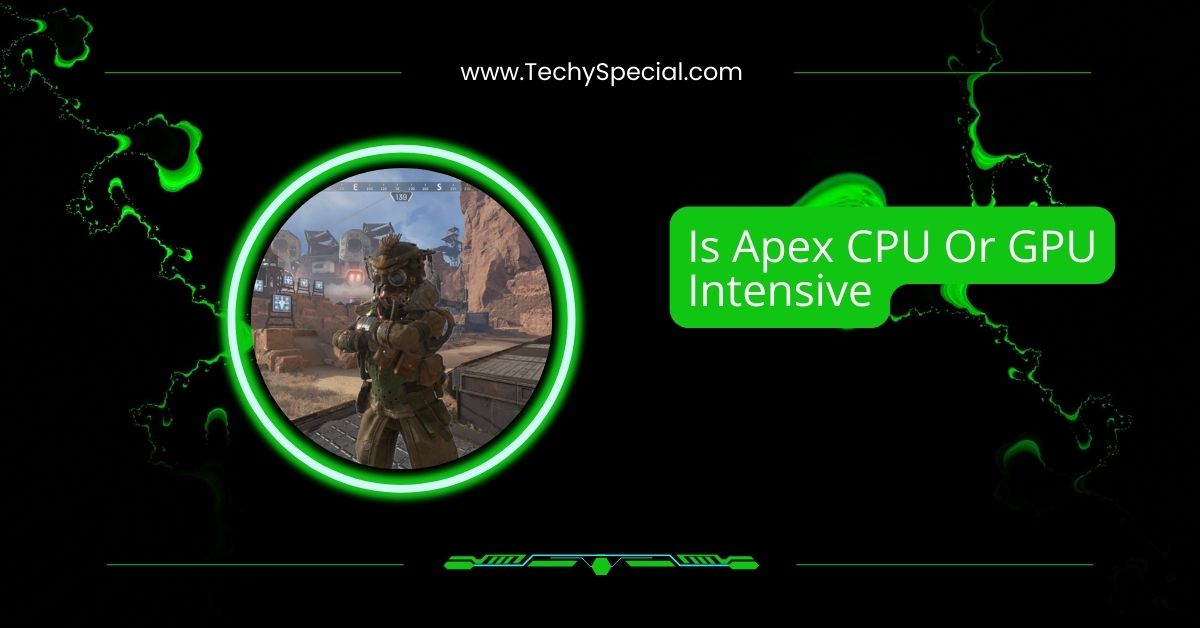Fortnite is a popular battle royale game that has captivated millions of players worldwide. As with any graphically rich and fast-paced game, understanding the hardware requirements is crucial for optimal performance.
Fortnite is more GPU-intensive for graphics rendering but still relies heavily on the CPU for game logic and performance, often causing high CPU usage compared to GPU, especially on lower-end systems.
This article delves into the roles of the CPU and GPU in Fortnite, providing insights to help you optimize your gaming setup.
Understanding the Roles: CPU vs. GPU in Gaming
CPU (Central Processing Unit): Often referred to as the “brain” of the computer, the CPU handles general-purpose tasks. In gaming, it manages game logic, physics calculations, AI behavior, and input processing.
GPU (Graphics Processing Unit): The GPU is specialized for rendering images and videos. In games, it processes textures, lighting, shading, and visual effects, ensuring smooth and detailed graphics.
Fortnite’s Graphics and Visual Demands
Fortnite boasts vibrant, cartoony graphics with dynamic environments. The game’s visual appeal is achieved through high-resolution textures, complex lighting, and particle effects. These elements place a significant load on the GPU, especially at higher settings and resolutions.
The CPU’s Role in Fortnite
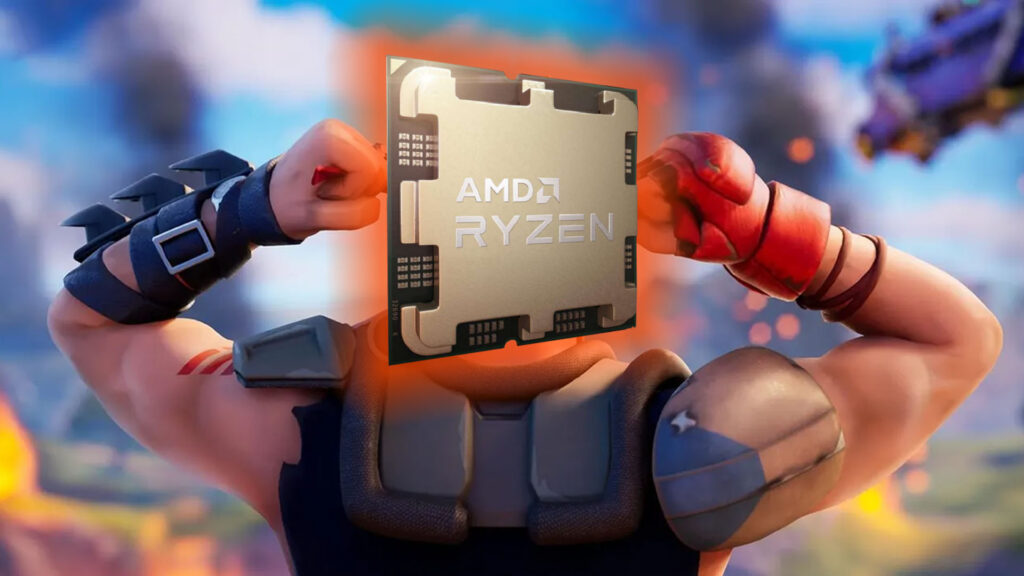
While the GPU handles visuals, the CPU is responsible for:
- Game Logic: Managing player inputs, game rules, and event triggers.
- Physics Calculations: Determining object movements, collisions, and environmental interactions.
- AI Behavior: Controlling non-player characters and their interactions.
- Networking: Handling data exchange between players in multiplayer sessions.
In scenarios with numerous players or complex structures, the CPU’s workload increases, making a capable processor essential for smooth gameplay.
GPU’s Significance in Fortnite
The GPU is paramount for rendering Fortnite’s detailed environments and effects. Tasks include:
- Rendering Textures: Processing high-resolution images for surfaces and objects.
- Lighting and Shadows: Calculating dynamic lighting, reflections, and shadow effects.
- Particle Effects: Displaying explosions, smoke, and other visual effects.
A powerful GPU ensures higher frame rates and better visual fidelity, enhancing the overall gaming experience.
Benchmarking Insights: CPU vs. GPU Usage
Benchmark tests reveal that Fortnite is more GPU-bound, especially at higher settings. For instance:
- GPU Usage: Often ranges between 80-90% during gameplay.
- CPU Usage: Typically hovers around 10-20%, spiking during intense in-game events.
These figures underscore the GPU’s dominant role in rendering Fortnite’s graphics.
Optimizing In-Game Settings for Performance
To achieve optimal performance:
- Lower Graphics Settings: Reducing settings like shadows, textures, and effects can alleviate GPU strain.
- Adjust Resolution: Playing at a lower resolution decreases the GPU’s workload.
- Limit Background Processes: Closing unnecessary applications frees up CPU resources.
Balancing settings ensures smoother gameplay without compromising visual quality significantly.
Hardware Recommendations for Fortnite
For 1080p Gaming:
- CPU: Intel Core i5 or AMD Ryzen 5.
- GPU: NVIDIA GTX 1060 or AMD Radeon RX 580.
For 1440p or Higher:
- CPU: Intel Core i7 or AMD Ryzen 7.
- GPU: NVIDIA RTX 3060 or AMD RX 6700 XT.
Ensuring a balanced CPU and GPU pairing prevents bottlenecks and maximizes performance.
The Impact of Multitasking and Background Applications
Running applications like streaming software, voice chat, or browsers alongside Fortnite increases CPU usage. This added load can lead to performance drops. To maintain optimal gameplay:
- Close Unnecessary Programs: Free up CPU resources.
- Monitor System Usage: Use tools to track CPU and GPU loads.
Efficient system management ensures a smoother gaming experience .
Future-Proofing Your Gaming Setup
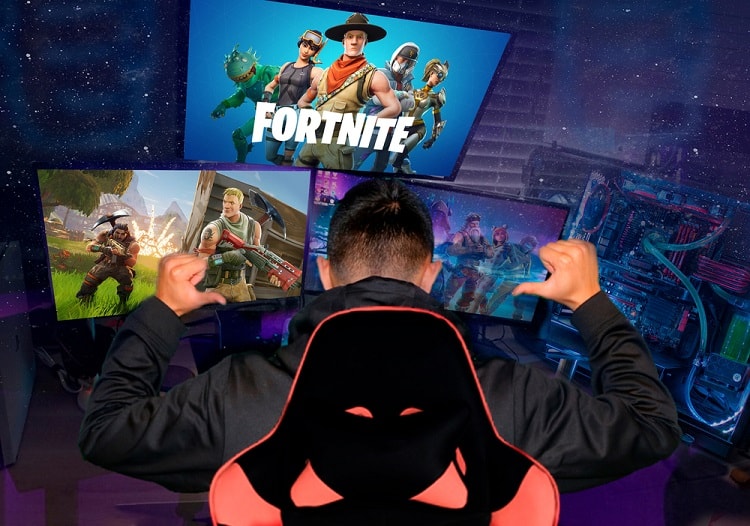
As Fortnite continues to evolve with new features and graphical enhancements, future-proofing your system is wise:
- Invest in a Robust GPU: To handle upcoming visual updates.
- Upgrade the CPU: Ensures smooth performance during complex in-game events.
- Increase RAM: Facilitates better multitasking and faster load times.
Staying ahead of hardware demands guarantees continued enjoyment of Fortnite’s evolving landscape.
Is Fortnite CPU or GPU heavy for gaming
Fortnite is mostly GPU-intensive because it needs strong graphics power to render its vibrant visuals. However, it also uses the CPU for handling game logic, physics, and networking. So, a balanced system with a decent CPU and a good GPU gives the best gaming performance, especially at higher settings or resolutions.
Is Fortnite performance mode CPU based
Yes, Fortnite’s Performance Mode is more CPU-based. It reduces GPU workload by lowering graphics quality, which shifts more tasks to the CPU. This mode is ideal for low-end systems, offering smoother gameplay with higher frame rates by focusing on performance over visual quality, making your CPU work harder than the GPU.
Is Fortnite a GPU based game
Fortnite relies heavily on the GPU, especially for rendering high-quality textures, lighting, and effects. While the CPU is still important for overall game logic and background tasks, the GPU does most of the heavy lifting, particularly at high settings and resolutions. A powerful GPU helps achieve smoother and more responsive gameplay.
Is Valorant CPU or GPU intensive
Valorant is more CPU-intensive than GPU-intensive. Since it’s a tactical shooter with a focus on fast reactions and smooth performance, the CPU handles most tasks like player movement, hit detection, and networking. It doesn’t require a high-end GPU, making it playable on many systems with a decent processor.
Best CPU for Fortnite
The best CPUs for Fortnite are mid- to high-end processors like the Intel Core i5/i7 or AMD Ryzen 5/7 series. These CPUs offer great multi-thread performance, fast processing speed, and smooth multitasking, which help reduce lag and keep your frame rates stable even in busy in-game situations.
Is Minecraft CPU or GPU intensive
Minecraft is primarily CPU-intensive, especially in vanilla (unmodded) versions. It uses the CPU to generate and manage the game world, mobs, and mechanics. The GPU becomes more important when using mods or shaders. For the best experience, prioritize a strong CPU with good single-core performance.
Is Rocket League CPU or GPU intensive
Rocket League is more GPU-intensive, but it also uses the CPU for game logic and physics. Most modern systems can run it well, but to get high frame rates and smooth gameplay, a decent graphics card is key. A balanced setup with a mid-range CPU and GPU works best.
FAQs
1. Is gaming CPU heavy or GPU heavy?
Gaming is typically GPU-heavy as it handles rendering graphics. However, certain games also rely on the CPU for game logic and performance tasks.
2. Is Fortnite a RAM heavy game?
Fortnite isn’t particularly RAM-heavy. It uses around 8GB of RAM on most systems, but performance is more dependent on the CPU and GPU.
3. Is Fortnite CPU bottlenecked?
Fortnite can be CPU bottlenecked, especially on lower-end systems. If the CPU isn’t powerful enough, it can limit performance, even with a strong GPU.
4. Why is Fortnite 100% CPU?
Fortnite can reach 100% CPU usage due to high in-game demands like physics calculations, player movements, and network processing, especially during intense gameplay.
5. Is GTA V CPU or GPU intensive?
GTA V is both CPU and GPU intensive, with the CPU handling AI, physics, and world simulation, while the GPU renders the game’s vast environments.
6. Is PUBG CPU heavy?
PUBG is more CPU-heavy because it involves large open worlds and complex mechanics like player interactions and AI. A powerful CPU improves performance.
7. Is Fortnite CPU heavy?
Fortnite is CPU-heavy in certain situations, especially when many players are involved. However, the game generally leans more on the GPU for visual rendering.
8. Does high FPS use CPU or GPU?
High FPS relies on both the CPU and GPU. The GPU handles graphics rendering, while the CPU ensures smooth processing of game logic and frames.
Conclusion
In conclusion, Fortnite is primarily a GPU-heavy game, relying on the graphics card for rendering high-quality visuals, textures, and effects. However, the CPU also plays a vital role in managing game logic, physics, AI behavior, and networking, making it crucial for overall performance. While Fortnite generally favors the GPU, certain in-game scenarios, such as multiplayer interactions or complex structures, can lead to higher CPU usage.
For optimal performance, a balanced system with a solid CPU and GPU is recommended. Additionally, using performance modes, lowering settings, and closing unnecessary background applications can help achieve smoother gameplay. Future-proofing your setup with robust hardware ensures that you can continue to enjoy Fortnite as the game evolves.
By understanding the balance between CPU and GPU demands, you can fine-tune your system for the best Fortnite experience, ensuring high FPS and minimal lag, no matter the setting or resolution.

